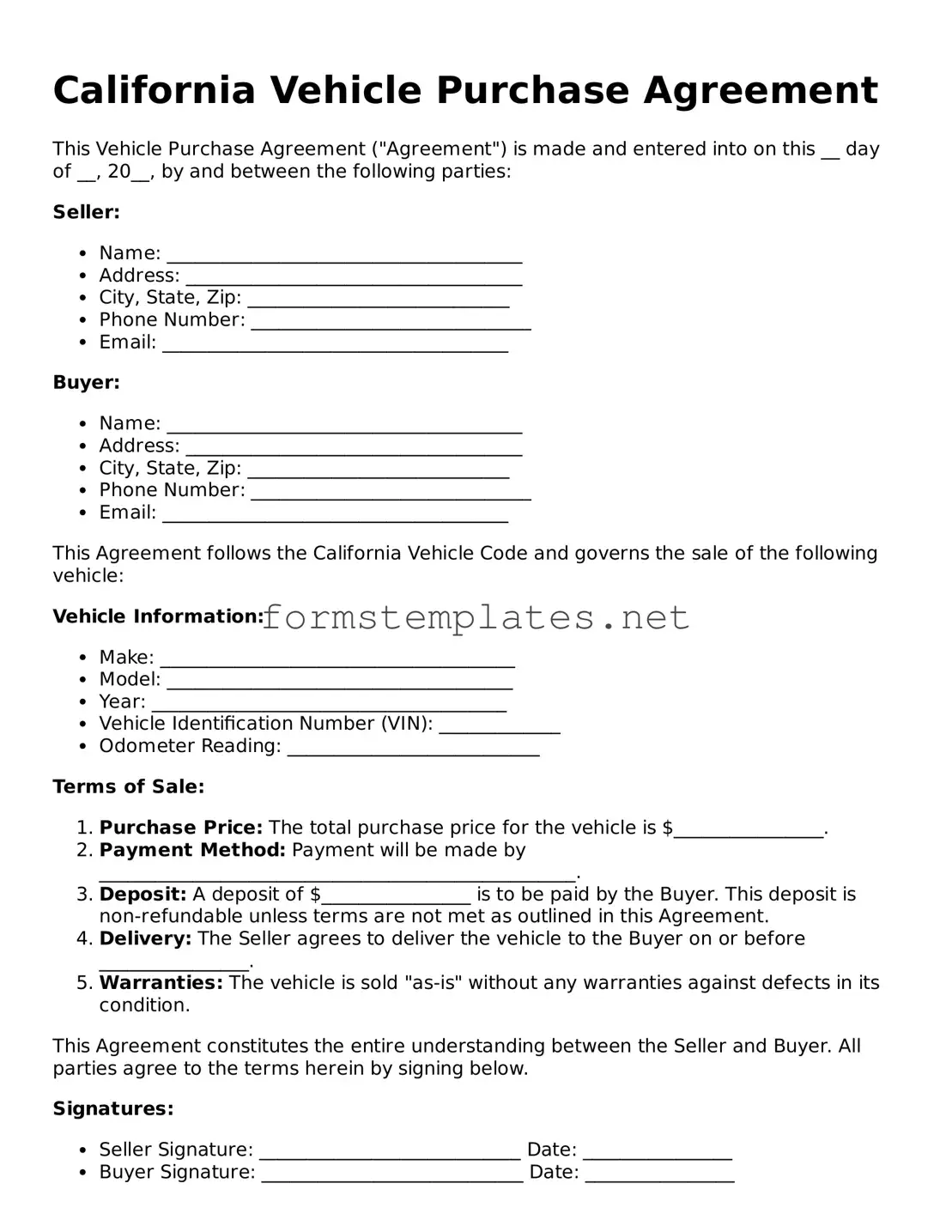Attorney-Approved California Vehicle Purchase Agreement Template
The California Vehicle Purchase Agreement form is a legal document that outlines the terms and conditions of a vehicle sale between a buyer and a seller. This agreement serves to protect both parties by detailing important information such as the vehicle's price, payment methods, and any warranties. Understanding this form is essential for a smooth and transparent transaction.
Open Editor Now
